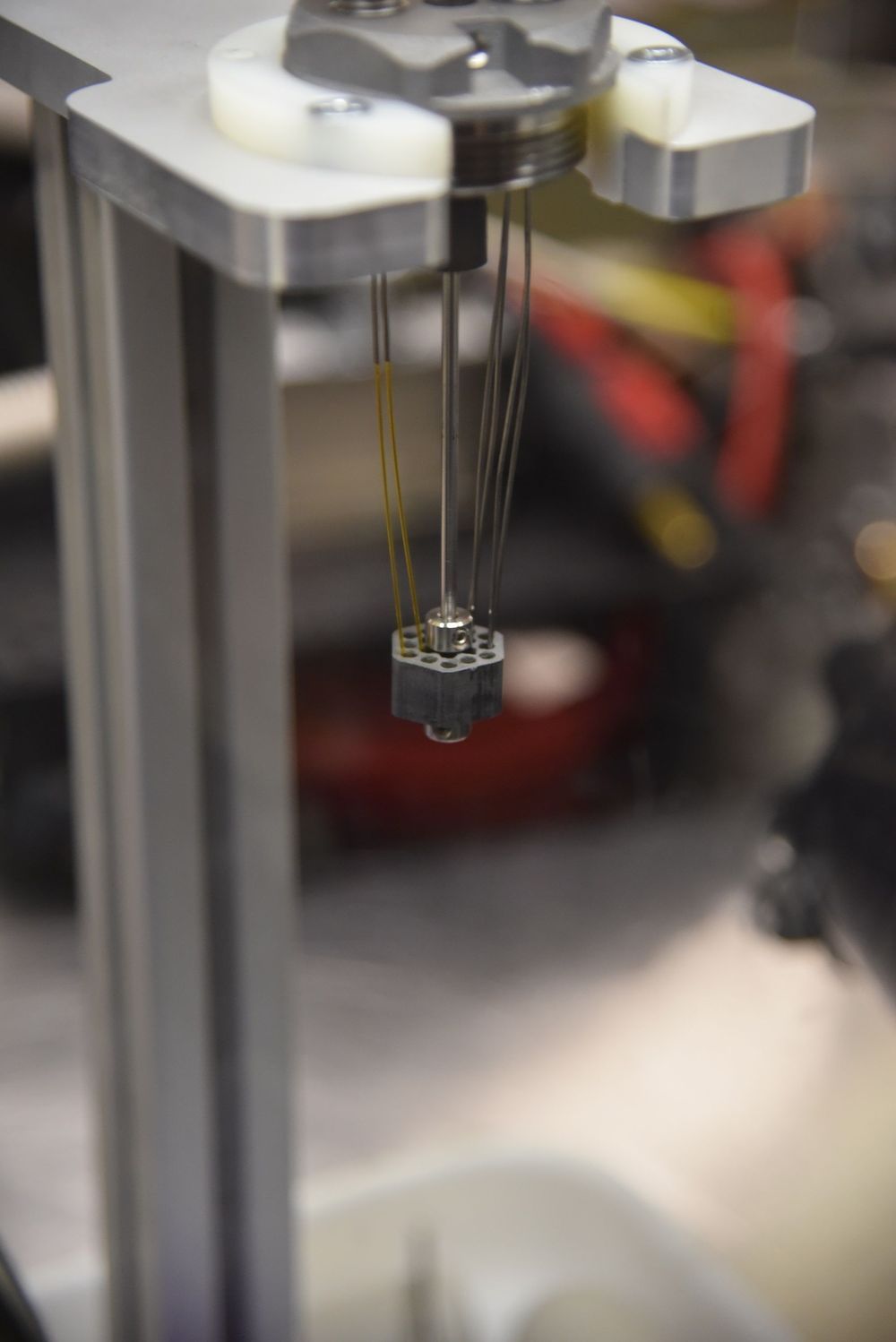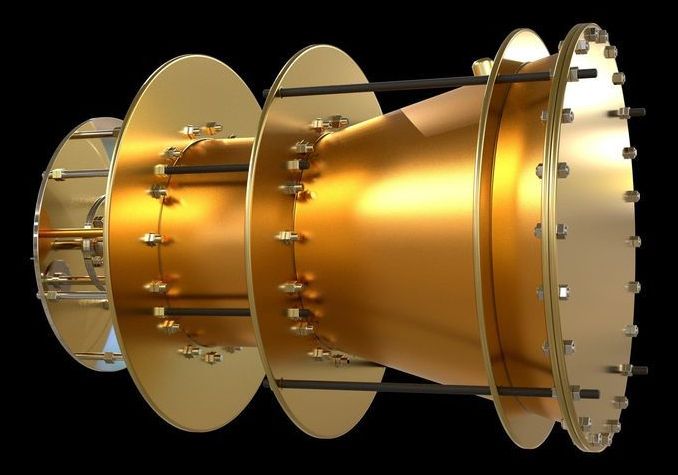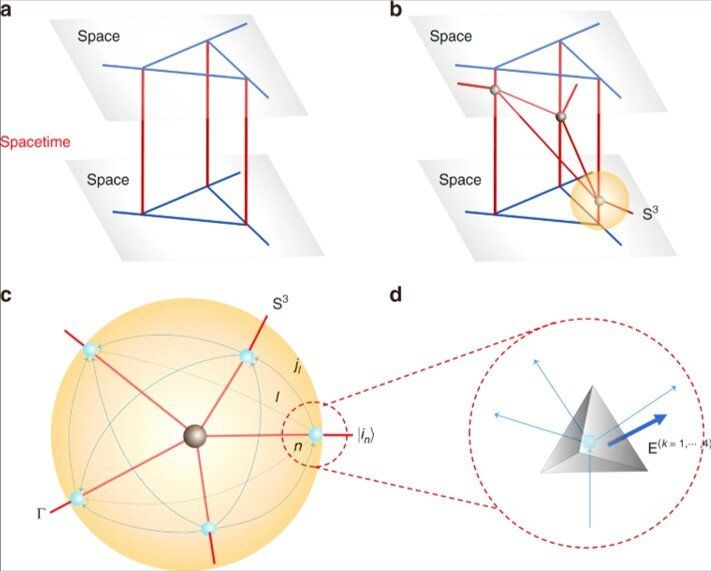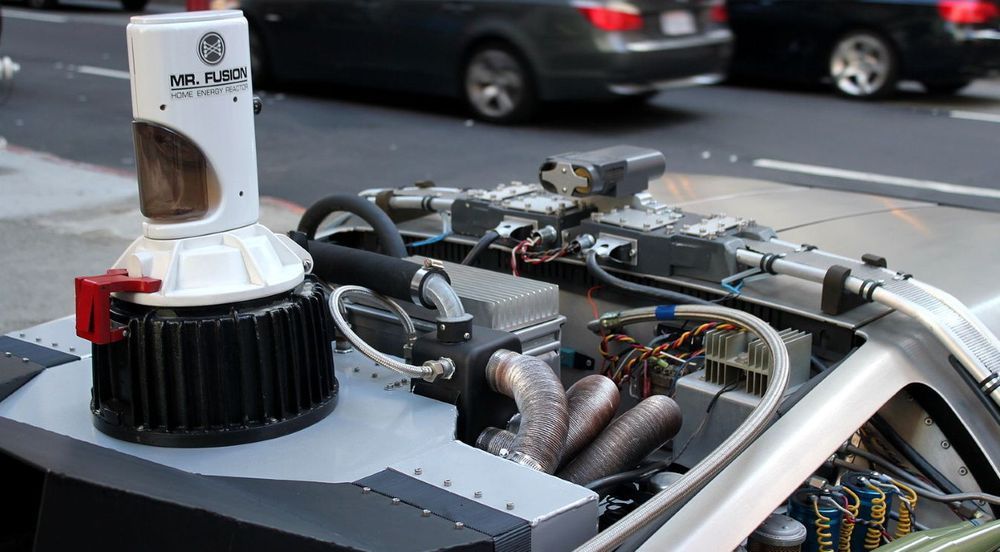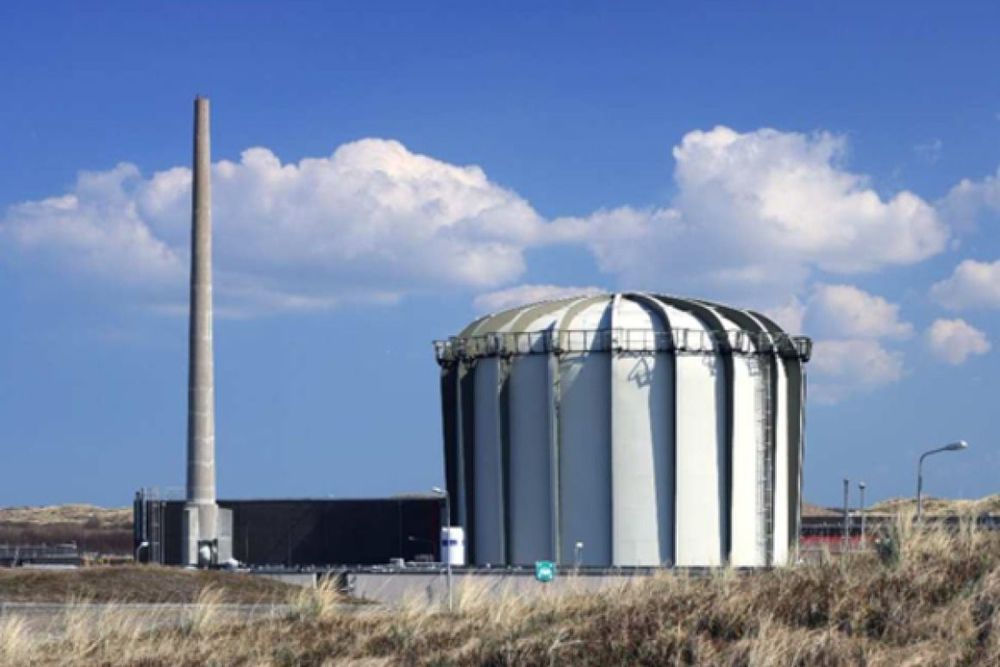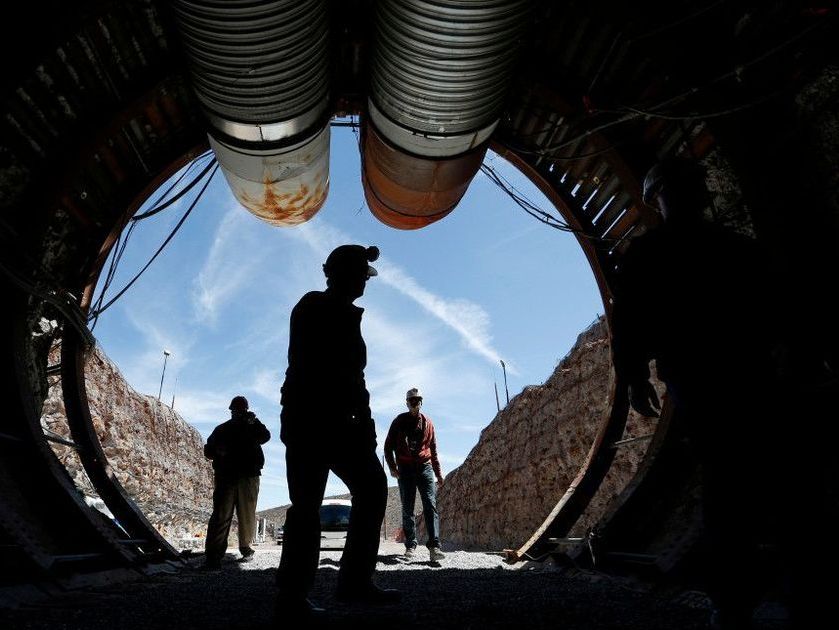Archive for the ‘nuclear energy’ category: Page 104
Oct 25, 2019
Space – the next frontier – requires innovation in nuclear fuel design and testing
Posted by Klaus Baldauf in categories: nuclear energy, space travel
To go where no man has gone before (and to get back) will require quite a bit of oomph. All that energy must come from somewhere. Traditional chemical rocket fuels could work for some missions, but nuclear-based propulsion systems have several advantages.
Nuclear thermal propulsion (NTP) rockets use a nuclear reaction to heat liquid hydrogen. When the hydrogen is heated, it expands and is forced through a nozzle to produce thrust. This is similar to how air can stream out of the stem of a balloon and cause it to fly across the room. With rockets, this happens with much greater speed and force.
These hydrogen propelled rockets are designed for space exploration, not for use on Earth, and subsequently would not be turned on (i.e. brought critical) until after they left Earth. Although the specific type of fuel for these applications has not been formally selected, the fuel envisioned for use in an NTP environment is uranium fuel.
Oct 21, 2019
A Mythical Form of Space Propulsion Finally Gets a Real Test
Posted by Quinn Sena in categories: alien life, genetics, nuclear energy, quantum physics
This does work it essentially is a very powerful microwave oven but it uses the exotic transfer of energy to propel an object. Plasma-based fusion reactors could power it indefinitely as well essentially it just be able to float out of the atmosphere. When it comes to more euclidean geometry or even like curl-free quantum mechanics for essentially space warping I think you could make warp drive with less energy just essentially slip through the ocean of space that is how black holes do it but they do it with gravity wells. I think if a genetic material could do similar things that are how essentially extraterrestrials do it as well it is more just a simple understanding of physics essentially. If the fabled q continuum exists it be essentially the realm of aliens because essentially it allows for travel through the universe without a ship. In fictional stories nightcrawler, a teleporting being was rumored. I think teleportation does exist as it is a qutrit but it is hard understanding travel instantaneously although I think some agencies rumor about it. If we can essentially teleport a photon we can teleport a human being even without a ship it would just require exotic physics and advanced biology. Essentially a portal gun from the Higgs boson could essentially make a physical transfer from one part to another part but it is hard to keep such things stable also there is a problem possibly of radiation you would probably need a suit to travel through a portal. Essentially it could work it just essentially be a wormhole from one point to another point but making that on the skin is essentially too hard unless you understand the properties of wormhole travel better by spaceship it would be easier. Essentially if you knew the physical space-time point by scanning an area you could essentially make a wormhole to that point and travel there. But doing that with genetics is harder as you need exotic properties or a better understanding of essentially of slipping through one place and coming out another.
Scientists have debated for decades whether the propulsion concept known as EmDrive is real or wishful thinking. A sensitive new tool may at last provide an answer.
Oct 21, 2019
Magneto-inertial fusion experiment nears completion
Posted by Genevieve Klien in categories: nuclear energy, particle physics
Assembly of the Plasma Liner Experiment (PLX) at Los Alamos National Laboratory is well underway with the installation of 18 of 36 plasma guns in an ambitious approach to achieving controlled nuclear fusion (Figure 1). The plasma guns are mounted on a spherical chamber, and fire supersonic jets of ionized gas inward to compress and heat a central gas target that serves as fusion fuel. In the meantime, experiments performed with the currently installed plasma guns are providing fundamental data to create simulations of colliding plasma jets, which are crucial for understanding and developing other controlled fusion schemes.
Most fusion experiments employ either magnetic confinement, which relies on powerful magnetic fields to contain a fusion plasma, or inertial confinement, which uses heat and compression to create the conditions for fusion.
The PLX machine combines aspects of both magnetic confinement fusion schemes (e.g. tokamaks) and inertial confinement machines like the National Ignition Facility (NIF). The hybrid approach, although less technologically mature than pure magnetic or inertial confinement concepts, may offer a cheaper and less complex fusion reactor development path. Like tokamaks, the fuel plasma is magnetized to help mitigate losses of particles and thermal energy. Like inertial confinement machines, a heavy imploding shell (the plasma liner) rapidly compresses and heats the fuel to achieve fusion conditions. Instead of NIF’s array of high-power lasers driving a solid capsule, PLX relies on supersonic plasma jets fired from plasma guns.
Oct 18, 2019
Quantum spacetime on a quantum simulator
Posted by Genevieve Klien in categories: computing, engineering, mathematics, nuclear energy, quantum physics
Quantum simulation plays an irreplaceable role in diverse fields, beyond the scope of classical computers. In a recent study, Keren Li and an interdisciplinary research team at the Center for Quantum Computing, Quantum Science and Engineering and the Department of Physics and Astronomy in China, U.S. Germany and Canada. Experimentally simulated spin-network states by simulating quantum spacetime tetrahedra on a four-qubit nuclear magnetic resonance (NMR) quantum simulator. The experimental fidelity was above 95 percent. The research team used the quantum tetrahedra prepared by nuclear magnetic resonance to simulate a two-dimensional (2-D) spinfoam vertex (model) amplitude, and display local dynamics of quantum spacetime. Li et al. measured the geometric properties of the corresponding quantum tetrahedra to simulate their interactions. The experimental work is an initial attempt and a basic module to represent the Feynman diagram vertex in the spinfoam formulation, to study loop quantum gravity (LQG) using quantum information processing. The results are now available on Communication Physics.
Classical computers cannot study large quantum systems despite successful simulations of a variety of physical systems. The systematic constraints of classical computers occurred when the linear growth of quantum system sizes corresponded to the exponential growth of the Hilbert Space, a mathematical foundation of quantum mechanics. Quantum physicists aim to overcome the issue using quantum computers that process information intrinsically or quantum-mechanically to outperform their classical counterparts exponentially. In 1982, Physicist Richard Feynman defined quantum computers as quantum systems that can be controlled to mimic or simulate the behaviour or properties of relatively less accessible quantum systems.
In the present work, Li et al. used nuclear magnetic resonance (NMR) with a high controllable performance on the quantum system to develop simulation methods. The strategy facilitated the presentation of quantum geometries of space and spacetime based on the analogies between nuclear spin states in NMR samples and spin-network states in quantum gravity. Quantum gravity aims to unite the Einstein gravity with quantum mechanics to expand our understanding of gravity to the Planck scale (1.22 × 1019 GeV). At the Planck scale (magnitudes of space, time and energy) Einstein gravity and the continuum of spacetime breakdown can be replaced via quantum spacetime. Research approaches toward understanding quantum spacetimes are presently rooted in spin networks (a graph of lines and nodes to represent the quantum state of space at a certain point in time), which are an important, non-perturbative framework of quantum gravity.
Oct 17, 2019
Patent talk: Plasma compression fusion device ignites curiosity over nuclear fusion
Posted by Saúl Morales Rodriguéz in category: nuclear energy
The patent application for a “Plasma Compression Fusion Device” was applied for in March last year. It read, “Application filed by US Secretary of Navy.” The patent application was published in September this year. Under discussion is a compact fusion reactor.
The focus is on a compact nuclear fusion reactor that measures between 0.3 to 2 meters in diameter. As of October 15, the application status was listed as pending. The inventor named in the patent application was Salvatore Pais.
As described in The War Zone, the reactor could “pump out absolutely incredible amounts of power in a small space.”
Oct 11, 2019
The Navy Just Patented a Compact Fusion Reactor, but Will It Work?
Posted by Quinn Sena in categories: innovation, nuclear energy
The Navy just patented a major potential breakthrough on compact fusion reactors, but the patent is long on claims and short on implementation specifics.
Oct 3, 2019
Synopsis: Nuclear Spectroscopy Reveals New Shapes of Excited Nuclei
Posted by Genevieve Klien in category: nuclear energy
Cadmium nuclei take on multiple shapes at low excitation energies, a discovery that overturns a long-accepted tenet of nuclear structure.
Atomic nuclei take on excited states when they vibrate, rotate, or when their constituent nucleons exchange one nuclear shell for another. In nuclei with nearly filled nuclear shells, it has long been thought that low-energy excitations were due exclusively to different patterns of vibration around a spherical shape: only in rare, high-energy excitations were these nuclei expected to assume more exotic shapes. Now, Paul Garrett, of the University of Guelph in Canada, and colleagues have found that the lowest-energy excited states of cadmium-110 and cadmium-112—once considered textbook examples of spherical vibration—are instead due to the rotation of various nonspherical shapes. The result is also the best evidence to date that a stable nucleus like cadmium can assume multiple shapes—all previously studied nuclei with coexisting shapes have been radioactive.
Oct 3, 2019
Major molten salt nuclear fuel test completed
Posted by Genevieve Klien in categories: engineering, nuclear energy
The Netherlands’ Nuclear Research and Consultancy Group (NRG) has completed a major milestone irradiation test of molten nuclear fuel salts in its High Flux Reactor at Petten 37 mi (60 km) north of Amsterdam. The first test of its kind since the ones carried out at Oak Ridge, Tennessee in the 1960s, its purpose is to learn more about the safe operation of a future Molten Salt Reactor (MSR).
First developed in the United States in the 1950s and ’60s, MSRs differ from conventional light-water nuclear reactors in a number of significant ways that make them potentially a safer and more efficient alternative. This is because, though a light-water reactor and an MSR work on the same principle of nuclear fission, they have a fundamentally different engineering design.
Sep 29, 2019
Are 3-mile-deep boreholes the long-term answer for nuclear waste stalemate?
Posted by Genevieve Klien in categories: chemistry, nuclear energy
Result: Some 6 million pounds of spent nuclear waste, generated over a half-century, remain in seismically sensitive spots on the California coast, at both San Onofre and Diablo Canyon. That’s among some 200 million pounds of radioactive waste languishing at 80 reactor sites in 35 states from sea to shining sea, where it will remain for the foreseeable future.
“We’ve so tainted this whole process because of fear,” said James Conca, a controversial nuclear energy advocate with a doctorate in geochemistry from the California Institute of Technology. “You get everyone so scared you never do anything.
”Look, we know where to put this stuff,” he said. ”We’ve known for 60 years. We have an operating deep geologic repository right now — but it’s only for bomb waste.”

